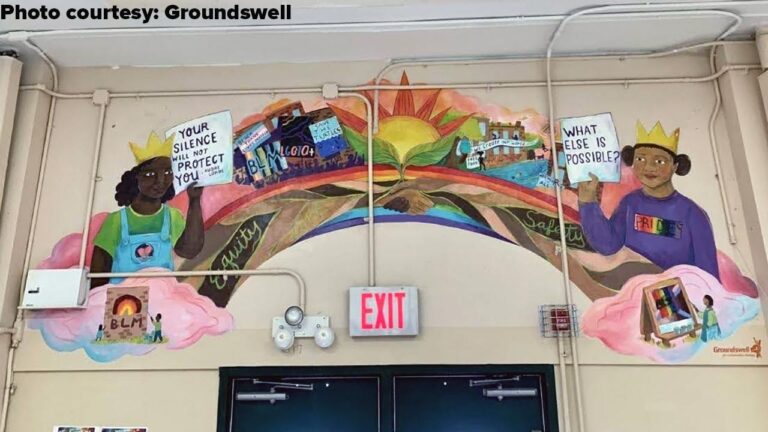San Francisco School Mural Removal Sparks National Dialogue on Teaching Difficult History
Unpacking the Debate Over the San Francisco School Mural
Recently, a San Francisco school‚Äôs choice to take down a mural portraying intense scenes from the city‚Äôs historical narrative has reignited a nationwide conversation about how American history‚ÄĒespecially its more painful and violent episodes‚ÄĒshould be introduced to students. This decision has polarized educators, parents, and community members, raising critical questions about whether children should be protected from distressing historical realities or encouraged to confront them openly.
Proponents of the mural’s removal argue that the vivid depictions of slavery, colonization, and indigenous hardships are too graphic for young audiences, potentially causing anxiety rather than fostering understanding. Conversely, those opposing the removal warn that erasing such imagery risks whitewashing history, depriving students of an authentic and unvarnished view of the past. This clash underscores the ongoing struggle to find a middle ground between truthful representation and age-appropriate education.
Critics of the removal emphasize that completely shielding children from harsh historical truths may hinder their development of empathy and critical thinking skills. They advocate for alternative strategies such as:
- Structured classroom dialogues where teachers provide context and facilitate thoughtful conversations about the imagery.
- Developmentally suitable resources that address sensitive topics with care and nuance.
- Community involvement initiatives that bring together students, families, and historians to discuss history collaboratively.
Meanwhile, the school board has committed to replacing the mural with artwork that emphasizes inclusivity, though some worry this may come at the expense of historical complexity.
| Key Issue | Arguments for Removal | Arguments Against Removal |
|---|---|---|
| Main Concern | Shielding children from trauma | Maintaining historical accuracy |
| Educational Focus | Highlighting positive, inclusive narratives | Using challenging imagery as educational tools |
| Community Impact | Avoiding distress among students | Encouraging open historical conversations |
Striking a Balance: Educating While Protecting Students from Historical Trauma
Schools face a nuanced challenge when teaching about America’s darker historical episodes. While confronting students with uncomfortable truths can nurture critical thinking and a fuller grasp of history, unfiltered exposure to graphic content risks overwhelming young learners emotionally. The solution lies in designing educational experiences that neither dilute history nor sensationalize suffering, but instead present complex narratives with appropriate context and care.
Experts recommend several strategies to navigate this balance effectively:
- Tailored content by age: Adjusting lessons to suit students’ developmental readiness helps them engage meaningfully with difficult topics.
- Facilitated conversations: Guided discussions enable students to process emotions and ask questions in a safe environment.
- Incorporating multiple viewpoints: Including diverse perspectives fosters empathy and critical analysis.
- Providing emotional support: Access to counseling and resources helps students manage any distress triggered by historical content.
| Method | Advantage | Illustration |
|---|---|---|
| Age-appropriate materials | Improved understanding | Simplified stories for elementary students |
| Guided classroom discussions | Emotional clarity | Teacher-led dialogues on historical events |
| Diverse perspectives | Expanded empathy | Inclusion of oral histories from various communities |
| Support services | Emotional well-being | School counseling availability |
Murals as Powerful Educational Tools in Public Schools
Murals in educational settings serve as compelling visual stories that bring the multifaceted history of the United States to life. They transform classrooms into immersive environments where lessons on civil rights, indigenous histories, and social justice transcend textbooks, offering students a daily, tangible connection to their nation’s past. Advocates argue that avoiding difficult historical realities risks fostering ignorance, while confronting them through art can cultivate empathy, critical awareness, and a richer understanding of societal progress.
Supporters of preserving murals highlight several key advantages:
- Facilitates open, guided conversations about challenging historical topics.
- Serves as a living record of the diverse cultural and historical experiences within American communities.
- Promotes inclusivity by recognizing stories often overlooked in traditional curricula.
| Historical Theme | Artistic Approach | Effect on Students |
|---|---|---|
| Civil Rights Era | Vivid, emotive visuals | Motivates social awareness and activism |
| Indigenous Histories | Symbolic imagery and storytelling | Fosters respect for native cultures |
| Immigration Narratives | Mixed media with community collaboration | Celebrates cultural diversity and perseverance |
Strategies for Inclusive, Honest History Education Without Censorship
To foster a well-rounded historical understanding, schools must prioritize transparency over censorship. Encouraging students to critically engage with all facets of history‚ÄĒincluding its most painful episodes‚ÄĒbuilds empathy, resilience, and analytical skills. This requires open, educator-led discussions that provide context and multiple viewpoints, enabling students to navigate complex narratives without emotional harm or misinformation. Inclusive history education should balance accuracy with sensitivity, ensuring students are neither shielded from reality nor overwhelmed by it.
Recommended actions include developing curricula that:
- Amplify diverse voices: Integrate firsthand testimonies and perspectives from historically marginalized groups.
- Encourage critical inquiry: Promote questioning and evaluation of historical sources.
- Leverage art as a learning catalyst: Use murals and historical artworks as starting points for dialogue rather than erasing them.
- Invest in teacher training: Equip educators with culturally responsive teaching skills.
| Approach | Outcome |
|---|---|
| Contextualized Art Discussions | Fosters empathy and critical thinking |
| Inclusive Curriculum Development | Reflects multiple historical perspectives |
| Professional Development for Educators | Enhances cultural awareness and teaching effectiveness |
Final Thoughts
The ongoing controversy over the removal of murals depicting difficult aspects of American history underscores the broader challenge schools and communities face in educating young people about the past. Finding the right balance between confronting uncomfortable truths and safeguarding students’ emotional health is a delicate endeavor. Whether through preservation, thoughtful contextualization, or replacement, decisions about historical artwork reflect the evolving national dialogue on memory, education, and identity in the United States.




